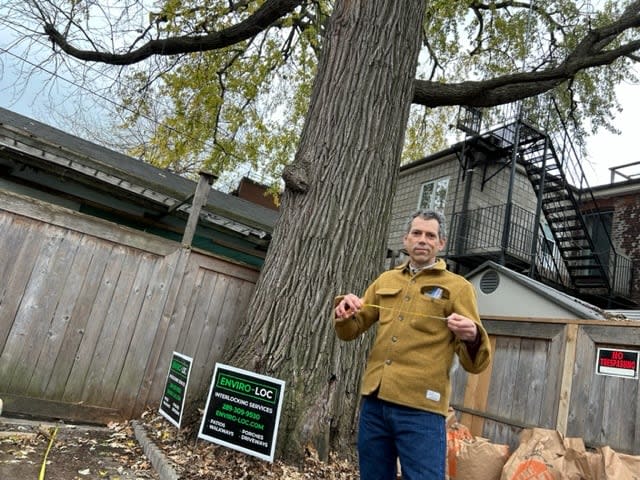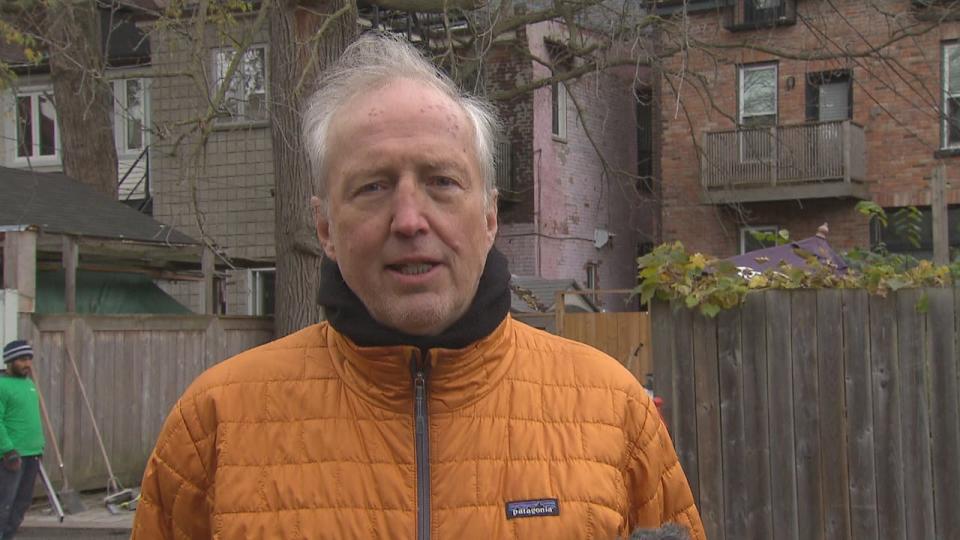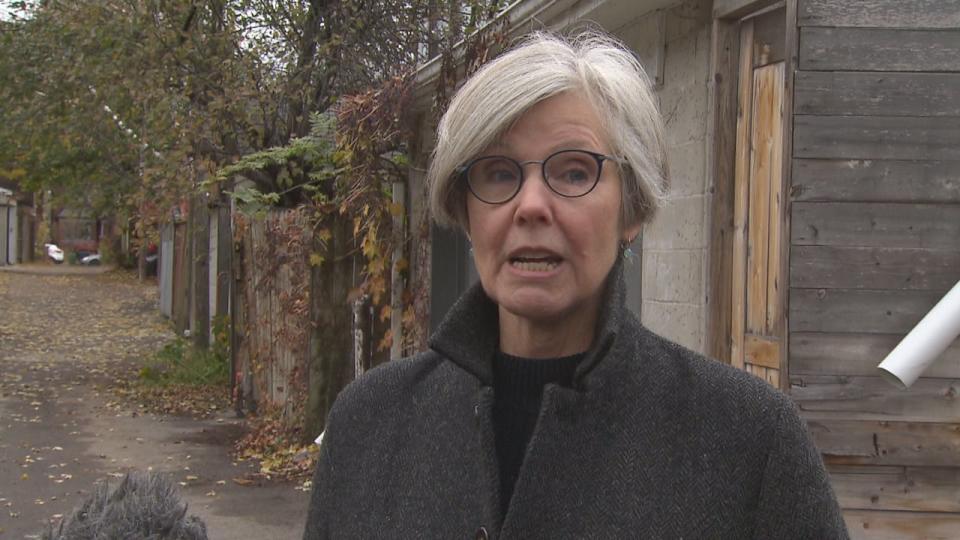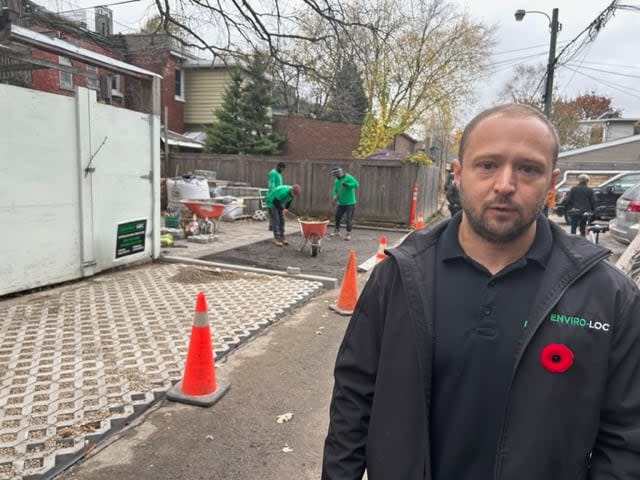Harbord Village's rare old oak gets new lifeline

Neighbours in Harbord Village rallied to help save a roughly 200-year-old rare bur oak tree that was slowly suffocating from the concrete driveways and parking pads built over its root system.
This week, work crews demolished the impermeable surfaces that have been limiting the tree's access to water and air, and replaced them with more forgiving paving stones and gravel.
"This is probably the oldest living thing in this entire neighbourhood," said Eric Davies, a University of Toronto forestry professor.
He estimates the tree, which is in the backyard of a Brunswick Avenue home, within a few metres of a public laneway, is between 150 and 250 years old.
"Older than Canada, older than any person, older than any house, older than any institution," Davies said.

Tim Grant is with the Harbord Village Residents Association. He and fellow association member Susan Mcdonald came up with the idea to replace the pavement around the the old oak. (Keith Whelan/CBC)
Susan Mcdonald and Tim Grant, neighbours and members of the Harbord Village Residents Association, came up with the idea to rehabilitate the surfaces nearest the tree.
They pitched the idea to the association's board about five months ago, Grant told CBC Toronto, and fundraising to pay for the project began two months ago. So far, he says neighbours have chipped in about $12,000 of the project's estimated $14,000 cost.
Association members began canvassing people whose homes on Brunswick Avenue and the neighbouring Major Street back onto the laneway near the tree for permission to convert their parking pads and driveways, at no cost, to more permeable material. They eventually won approval from the tree's nearest neighbours.
The decision to participate was a no-brainer, homeowner Andy Galambo told CBC Toronto.
"It's a beautiful tree and it's been around for hundreds of years," he said. "Cities are very sterile. There's not a lot of life in the cities. It's actually quite pleasant to have something that big, that majestic, right there."

Susan Mcdonald helped the Association raise money to replace the impermeable pavement with more porous concrete and gravel (Keith Whelan/CBC)
The association approached a Halton Region-based company called Enviro-Loc, which specializes in environmentally responsible construction. President Daniel Domenico offered to do the demolition and re-surfacing for free, and his crew finished the job earlier this week.
"Construction has a bit of a taint," Domenico said.
"If we can put a good spin on construction and give back to the environment and maybe save a couple of trees along the way, that was something that we thought was important."
Without this week's "incredibly significant" resurfacing project, Davies says the tree's lifespan could have been seriously reduced.

Daniel Domenico, of Enviro-Loc, and his crew replaced the old cement surface near the tree with gravel and interlocking, porous concrete blocks. (Mike Smee/CBC)
"It could be the difference between the life and death of this tree over the next decade," he said. "With proper care, this tree could live another hundred years."
However, Davies says the tree will still require constant attention — attention like the city's plan to replace the adjacent laneway's concrete surface with permeable pavement next year.
City staff told CBC Toronto that plans are underway to dig up a portion of Chapel Hospice Lane, which runs within a couple of metres of the tree, and replace it with a permeable surface. Staff said that work is expected to be completed by spring 2024.
"Projects like this one enhance the extent and longevity of the urban forest by improving conditions for urban tree growth," staff said in an email. "Projects can also mitigate the urban heat island effect, manage stormwater runoff to enhance water quality and provide retention to reduce erosion."
Grant says some neighbours criticized the association's efforts to save the tree, suggesting it would be better spent on other projects. But for the most part, homeowners closest to the tree were cooperative.
"It's been a real community-wide project and we're thrilled with the results," he said. "Trees make people happy."


